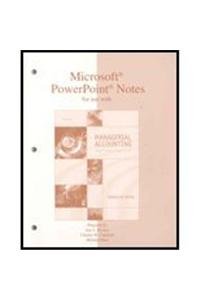Answered step by step
Verified Expert Solution
Question
1 Approved Answer
Exercise 5-7A (Algo) Effect of FIFO Versus LIFO on income tax expense LO 5-1 The Brick Company had cash sales of $228,100 for Year 1,
Exercise 5-7A (Algo) Effect of FIFO Versus LIFO on income tax expense LO 5-1 The Brick Company had cash sales of $228,100 for Year 1, Its first year of operation. On April 2, the company purchased 171 units of inventory at $220 per unit. On September 1, an additional 128 units were purchased for $242 per unit. The company had 37 units on hand at the end of the year. The company's income tax rate is 40 percent. All transactions are cash transactions. Required a. The preceding paragraph describes five accounting events: (1) a sales transaction, (2) the first purchase of inventory. (3) a second purchase of inventory, (4) the recognition of cost of goods sold expense, and (5) the payment of income tax expense. Show the amounts of each event in horizontal statements models, assuming first a FIFO and then a LIFO cost flow. b. Compute net income using FIFO. c. Compute net income using LIFO. e. Which method, FIFO or LIFO, produced the larger amount of assets on the balance sheet? Complete this question by entering your answers in the tabs below. Required Required Required Required A B E The preceding paragraph describes five accounting events: (1) a sales transaction, (2) the first purchase of inventory, (3) a second purchase of inventory, (4) the recognition of cost of goods sold expense, and (5) the payment of income tax expense. Show the amounts of each event in horizontal statements models, assuming first a FIFO and then a LIFO cost flow. (In the Cash Flow column, use the initials OA to designate operating activity, IA for investing activity, FA for financing activity, NC for net change in cash. Enter any decreases to account balances and cash outflows with a minus sign. Not all cells require input.) THE BRICK COMPANY Effect of Events on Financial Statements Panel 1: FIFO Cost Flow Income Statement Show less Balance Sheet Event No. Cash + Inventory = Retained Earnings Revenue 1. + 2. + 3. + 4. + 5. Balance 0 Expenses Net Income Statement of Cash Flows 0 01= 0 Panel 2: LIFO Cost Flow 1. + 2. + = 3. + 4. = 5. Balance 0 0 0 < Required A Required B > Exercise 5-7A (Algo) Effect of FIFO Versus LIFO on income tax expense LO 5-1 The Brick Company had cash sales of $228,100 for Year 1, its first year of operation. On April 2, the company purchased 171 units of inventory at $220 per unit. On September 1, an additional 128 units were purchased for $242 per unit. The company had 37 units on hand at the end of the year. The company's income tax rate is 40 percent. All transactions are cash transactions. Required a. The preceding paragraph describes five accounting events: (1) a sales transaction, (2) the first purchase of inventory. (3) a second purchase of inventory. (4) the recognition of cost of goods sold expense, and (5) the payment of income tax expense. Show the amounts of each event in horizontal statements models, assuming first a FIFO and then a LIFO cost flow. b. Compute net income using FIFO. c. Compute net income using LIFO. e. Which method, FIFO or LIFO, produced the larger amount of assets on the balance sheet? Complete this question by entering your answers in the tabs below. Required Required Required Required A B C E Compute net income using FIFO. (Round your final answer to the nearest whole dollar amount.) Net income assuming FIFO cost flow < Required A Required C > Exercise 5-7A (Algo) Effect of FIFO Versus LIFO on income tax expense LO 5-1 The Brick Company had cash sales of $228,100 for Year 1, its first year of operation. On April 2, the company purchased 171 units of inventory at $220 per unit. On September 1, an additional 128 units were purchased for $242 per unit. The company had 37 units on hand at the end of the year. The company's income tax rate is 40 percent. All transactions are cash transactions. Required a. The preceding paragraph describes five accounting events: (1) a sales transaction, (2) the first purchase of inventory. (3) a second purchase of Inventory, (4) the recognition of cost of goods sold expense, and (5) the payment of income tax expense. Show the amounts of each event in horizontal statements models, assuming first a FIFO and then a LIFO cost flow. b. Compute net income using FIFO. c. Compute net income using LIFO. e. Which method, FIFO or LIFO, produced the larger amount of assets on the balance sheet? Complete this question by entering your answers in the tabs below. Required Required Required Required A B E Compute net income using LIFO. (Round your final answer to the nearest whole dollar amount.) Net income assuming LIFO cost flow < Required B Required E >
Step by Step Solution
There are 3 Steps involved in it
Step: 1

Get Instant Access to Expert-Tailored Solutions
See step-by-step solutions with expert insights and AI powered tools for academic success
Step: 2

Step: 3

Ace Your Homework with AI
Get the answers you need in no time with our AI-driven, step-by-step assistance
Get Started


